Another Timbre TimHarrisonbre
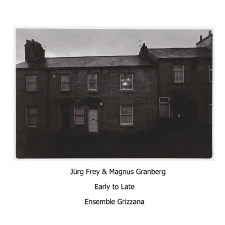
at121 Early to Late
1 - Magnus Granberg ‘How Vain Are All Our Frail Delights?’ (2017) 40.50 youtube extract
2 - Jürg Frey ‘Late Silence’ (2017) 32.30 youtube extract
Ensemble Grizzana: Jürg Frey (clarinet), Magnus Granberg (celesta, harmonica & stones)
Angharad Davies & Mira Benjamin (violins), Anton Lukoszevieze (cello), Dominic Lash (double bass),
John Lely (electronics, harmonica & stones), Richard Craig (flute & electronics), Philip Thomas (piano),
Simon Allen (dulcimer & glass harp), Dimitra Lazaridou-Chatzigoga (zither & electronics)
Recorded at Huddersfield University, November 2017
Jürg Frey and Magnus Granberg interviewed by Dominic Lash
Dominic - I'd like to ask about the titles of the two pieces. They're both so resonant and evocative. Late Silence makes me think of Late Spring, the Ozu film. I think the music has something of the same patience and poise – but also underlying tension and pathos – that one finds in that film. How Vain Are All Our Frail Delights obviously comes from the Philip Sidney poem that William Byrd set to music; I find I can't decide whether the music echoes or challenges the emotional register of the title. Would you both like to say something about the titles?
Jürg – Not being a movie connoisseur, I hadn’t heard of Late Spring by Ozu, but I
may appreciate this connection with Ozu. For me Late Silence means a field of allusions,
and today I was looking back in my sketchbook to find how I came to the title. And
it's interesting that I didn’t find this title anywhere in the sketchbook, but I
did find some other attempts and words that circle round the possibilities of a title:
"Desires,
Delights, Vainness" (which obviously comes from the Byrd composition) "Secret Garden",
"The colour(s) of absence", "Fragility", "Deploration" (which comes from the Ockeghem
piece), "Volatile Voices, Motionless Phrases". "Clouds, Circles, Melodies, Silences".
"Ground, Material, Place".
It seems that the title "Late Silence" came to the piece
without a clear elaborated reason, but was prepared by the field of associations
of other possible titles. It was suddenly there, and it displaced all the other words
and allusions into the background.
This combination of process and sudden illumination is part of my experience not
just for titles, but also for the work on a piece itself. And then, I feel, the title
is right, and now I have to reflect and to find the words for my decision.
Late silence,
late pieces - we know this connection to the late work of a composer, and the title
speaks to this context too. And it's also a reference to the title Déploration sur
la mort de Binchois, by Johannes Ockeghem. It's a lamentation for the dead and the
knowledge of a deep silence.
And not least, it's a reflection on my work over a long
time. After having written so many kinds of silences within the last 40 years, more
and more I discover silence in the music itself.
Calm and silence are close to each other, but separated. The music creates a secure
room. As long as music sounds, we are inside this secure room. In the music of Ockeghem
and Byrd, this room seems to be safe. In my music it's fragile and subtle, even the
pathos and the tension you mention seem to be on frail ground.
Magnus – As you said, the title of my piece is a fragment from the poem by Philip Sydney which was set to music by William Byrd in his consort song ’O, Lord How Vain’, which itself served as an impetus for the music I wrote. Using a fragment of the lyrics of the song is on the one hand simply a way of recognizing and paying homage to the music that inspired me to write the piece, but on the other hand also reflects the method by which I use source materials from pre-existent musics as a point of departure for generating something different. Whether the music echoes or challenges the emotional register of the title is very much up to each one of us; there is no programmatic intent on my behalf. But from a strictly personal point of view, I’d say that I’m inclined to echo as much as challenge the question posed in Sidney’s poem: echoing it in the sense that the question he poses is in fact one that I’ve asked myself on a more or less a daily basis for some decades now. Challenging it, as Sidney suggests, not by disdaining all these pleasures, but by trying to treasure the ones that are worth treasuring. I guess all these ‘frail delights’ are simply what we’re left with in the end, and having the talent to cherish and enjoy them will probably make you a happier human being. Or, if I may put it this way: the frailer the delight, the greater the joy…
Dominic - I believe that the commission for these pieces specifically involved writing music in some kind of relation to the pieces by Byrd and Ockeghem that you mentioned. Could you tell us a bit more about this?
Jürg - When Magnus and I met with Simon Reynell in a café in Huddersfield in autumn 2015, Simon commissioned new pieces from us both. He also expressed a wish that the music should have some kind of relation to Renaissance music. It was a very open commission, with the musicians of the Grizzana Ensemble plus friends in mind, and this hint of a connection with early music.
From one of Simon's Facebook posts, maybe three years ago, I knew he had a special
relation to Déploration sur la mort de Binchois by Ockeghem. It was one of his favourite
pieces to listen to at the time. And that's how I came across the piece and I listened
to it quite often as well. So when Simon asked me for the new piece, it was clear
that I would take it as a starting point. Later Magnus suggested How Vain Are All
Our Frail Delights by Byrd, and I remember some lovely discussions with Magnus about
how to proceed – using both of the pieces or just one of them, and which one, and
could we agree on one piece or should we just leave it open.
Dominic - Could you tell us a little more about how the pieces were composed and notated? They give the performers very different tasks, and I'd also be interested to hear your thoughts about playing in each other's piece.
Magnus - Well, my piece basically consists of a few different pools of materials (containing melodic and rhythmic fragments, extended melodies, single notes, chords, suggestions regarding timbre etc.) notated in conventional staff notation, along with some suggestions as to how to treat them, as well as a temporal structure which regulates when to play from which group of materials. Within these groups or pools of materials the musicians are free to choose what to play and when to play it, and the final outcome is very much a result of the superimpositions, juxtapositions and interactions of the musical materials, as well as of individual and collective processes of listening, deciding (intuitively or consciously), acting and interacting, or not interacting, with one another.
As regards how the musical materials themselves were composed, I took both Byrd’s and Ockeghem’s pieces as points of departure, using Byrd’s song somewhat more than the Ockeghem. Rhythmic phrases were sometimes quoted, sometimes fragmented or altered, at other times transposed to other meters, or rewritten as augmentations or diminutions. Running through the piece is a so-called ‘cantus firmus’, an extended melody in shifting meters which is played by the clarinet more or less throughout (and at times also by other instruments). Its shifting rhythms were arrived at by combining small modules of rhythmic materials derived from the two pieces. The tonal modes were also derived from both pieces as well as from a song by Jerome Kern, ’In Love in Vain’, which I got to thinking about while writing the piece, and which somehow started to resonate with me. The tonal and rhythmic materials were then subjected to certain methods and procedures in order to craft the melodic and harmonic materials that constitute the piece. As regards the temporal framework which regulates the ordering of the different groups of materials, it uses proportions found in the source materials, each group of materials being combined with a new time value more or less each time they reappear.
I think that the experience of playing Jürg’s piece is quite different from playing mine. In Jürg’s score we are coordinated with one another to a much larger extent, and that demands particular forms of concentration, discipline and sensibility. This is obviously a different way of working and being within the music than when you’re allowed a greater amount of individual freedom of action, and the aspects of concentration, discipline and sensibility take on different forms. But I also think the two pieces have many things in common, and I’d be very interested to hear your perspective on the experience of playing in both pieces as well, Dominic.
Jürg - When I play a piece like Magnus' How vain, I'm involved as a clarinettist
as well as a composer. As clarinet player, it was first of all a pleasure to play
the music because everything sounded so good, the blending of the clarinet with glass
harmonica, celesta, piano and zither was incredible. But it was also great to be
in contact with the strings, the electronics and the colourful electronically modulated
sounds of the flute, creating such a lively navigation through the whole duration
of the music.
And I really appreciated the role that Magnus invented for me with
the cantus firmus, which is usually a prominent part of a composition. It does seem
to be some kind of "subject" in this piece too, but then the score says: The Cantus
Firmus is (...) to be played very softly, almost silently. And later: (...) the Cantus
Firmus at times only being present within the mind of the performer.
From the point
of view of a composer, I likewise enjoyed how good the piece sounded. So many different
fragments fitting together perfectly, and foreground and background balanced in an
enigmatic way. It maintains a perpetual suspense across forty minutes, and when I’d
seen the score for the first time, I’d just seen a huge collection of snippets...
For
my piece, the material comes from Ockeghem, Byrd and myself - like three standpoints
that are not mixed. The materials from Ockeghem and Byrd are used literally or slightly changed. So,
for example, at the beginning of the piece, the hammered dulcimer and clarinet play
the Byrd tune (and later Ockeghem, and then again Byrd), the violins play the Ockeghem
melody, rhythmically transformed, and I myself added two notes for the piano, "a"
and "g". This behaviour regarding the material is established at the very beginning
in a strict way, and is also effective for decisions through the whole piece.
This
process also speaks to a general focus in my daily work: how to find my music, be
it in the notes from Ockeghem or in my own material. Recently I read this sentence
by William Carlos Williams, which I’d like to quote here: "The same thing exists,
but in a different condition when energized by imagination".
Dominic - For me playing both pieces was very much to do with both trust and fragility, but in rather different senses. The way your piece is composed, Magnus, it almost feels like it can't go "wrong" if the musicians approach it with the right intention and spirit. Obviously some versions will be more successful than others, but that is beyond anybody's control. So the process of playing required great attentiveness, but was actually a calm and comfortable experience as long as you trusted the group and the music – in a sense the fragility seemed to lie more in the sounding result than the execution.
With your piece, Jürg, there was a different kind of tension because it requires precise things to be played at very precise times. So this produced a slightly different kind of trust, which involved trusting the fragile balance (to echo the title of another of your pieces) between the various musicians and their various tasks as it developed in time. This balance was perhaps a little more like a tightrope walker's balance than is the case in Magnus's piece!
Magnus - Yes, I agree that concepts of trust and fragility relate to both Jürg’s and my music and feel central to both our work. And I think you’re right in pointing to the differences in how these concepts apply in these two cases. Being a composer-performer with a background in improvisation, and mostly playing my own music, it was wonderful getting to play Jürg’s music and to experience how differently these two concepts applied, while still having the most important aspects of them in common: the question of having trust in each other as individuals as well as a collective, and having trust in the music itself. And, if I may put it this way, to recognise and value the fragility of this trust.
Dominic - Both pieces are very beautiful, but they don’t just contain obviously "beautiful" sounds – they also have elements of noise, of roughness, of plainness. I'm reminded of a well-known interview with Helmut Lachenmann by Paul Steenhuisen, in which he talks about teaching a class of children and showing them two photographs:
“One was an attractive photograph of the movie star Sophia Loren. The other was a drawing by Albrecht Dürer, who had drawn a picture of his mother: very old, with a long nose, a bitter-looking face. She had had a hard life and her face was full of wrinkles. I showed them the two pictures and asked, 'Who is more beautiful?' They were totally confused, and then came a wonderful answer I will never forget – it was the highlight of my life. A girl said, 'I think the ugly one is more beautiful.'”
Does this kind of dialectical thinking have a relevance to the aesthetics of your musics? Or are there different kinds of relationships between the "beautiful" and the "not-beautiful" at work?
Magnus - I guess most of us share the experience of the little girl in Lachenmann’s lovely anecdote: sometimes finding that things which deviate from a conventional and exclusive concept of beauty can be richer, more complex and rewarding, and more ‘truly’ beautiful than things that adhere exclusively to a more conventional and narrow definition of beauty. That said (and not being an expert either on aesthetics in general, or on dialectical aesthetics in particular), I guess I’m just trying to make a music which can hopefully do something to encompass and reconcile such categories with one another, making it a little easier to perceive and understand things without attaching too many preconceived notions to them. To be able to delight in the fragility of experience itself, I guess.
Jürg - I don’t want to stay too long with the Lachenmann quote; I think it says more about him than about the complexity of our experience of beauty. And – though in the context of that class it may work - I also think that for Lachenmann himself it’s not as simple as ‘the ugly is beautiful and vice versa’, as we know from his music. Moreover it refers to something that we know well from other music: Monteverdi, Mozart ... all the sad, ugly, terrible moments in their music which sound so incredibly beautiful.
I looked at the two pictures on my computer - the drawing by Albrecht Dürer and a casual photograph of Sophia Loren - and I must confess that I can’t make a quick and easy decision. The two pictures represent separate categories and I see a very clear dividing line between them. Sophia Loren looks at the photographer, Albrecht Dürer looks at his mother.
The one is Sophia Loren, she looks beautiful, and she knows it. The other is Dürer’s mother, she doesn’t care how she looks, but it was Dürer who drew the picture, and with all his craft and imagination he made this impressive work, and he knows it.
Let me talk about my experience when I compose. Now I’m in Dürer’s place and I use all the possibilities of my craft to make a piece that sounds good, independently of whether the sounds are in the conventional sense beautiful or not. I like my sounds, I have a relation to them and I want to give them the possibility of existing in my piece. I create a ground and a musical environment for them to sound good. And I’m looking for reasons for them to be beautiful.
But to sound beautiful is not a task in itself. Beauty happens as a sideline. When beauty comes into focus as an end in itself, then beauty begins to disappear. The work may touch a border, but I keep the idea of beauty outside.
I also know this: sometimes sounds might come in the Sophia Loren mood; they pose for the audience. But it's not the sounds themselves that do so, it’s the composer who doesn’t prevent the sound from doing so.
I have never thought about the ugly and the beautiful in a dialectic sense in my music. Beauty is fluid, and even authenticity, as an idea behind beauty, is not a sure fact; it’s fragile and has to be worked out anew in each piece. I never consider the fragile surface in my music as a source of beauty. I can say this because during the process of composing I encounter so many fragile sounds and they are not all beautiful. But I discover music and the possibilities of bringing it to life, at least for a moment.
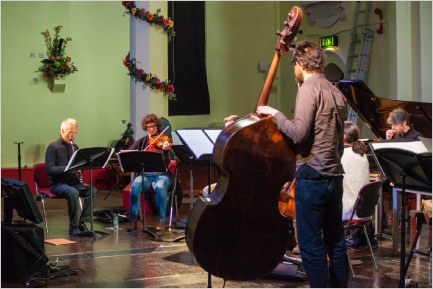
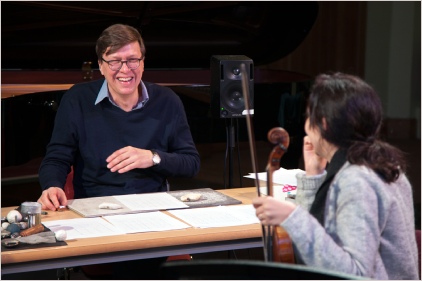
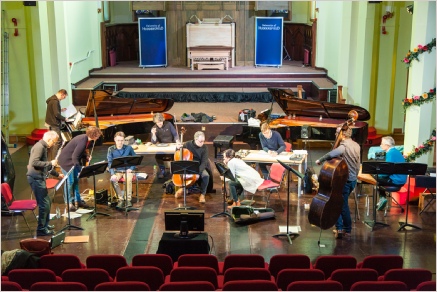
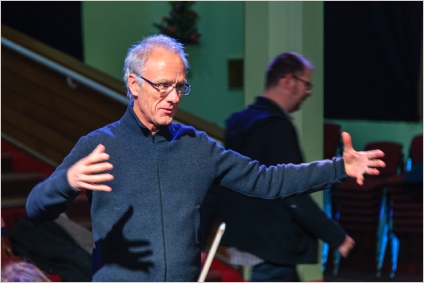
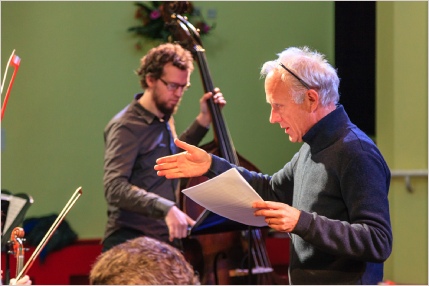
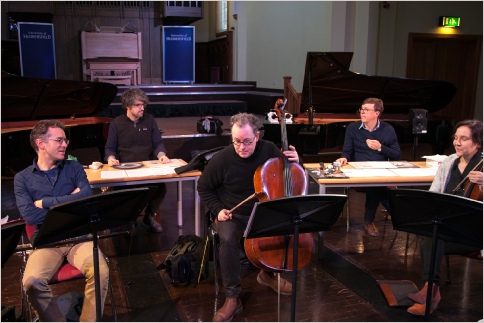
Reviews
“This Friday Music We’d Like To Hear is presenting a one-off concert outside of their usual summer season, of Ensemble Grizzana playing two new pieces by Jürg Frey and Magnus Granberg. It’s a repeat of their two premieres at Huddersfield last year, which I wanted to get to but couldn’t, so I’m happy.
Even better, the gig is a launch of a new CD containing both works. Simon Reynell at Another Timbre made this recording “immediately after” the premiere concert in Huddersfield, with sound that is much cleaner and clearer, with greater immediacy and intimacy than usually possible to hear from the audience at St Paul’s Hall. For all their newness, these works are played by Grizzana play with deep knowledge and empathy for this style of music. After all, both composers play as part of the group. They respond to the contrasting expectations in the scores (Granberg allowing freedoms, Frey specifying precision) with great discipline, a studied awareness of how sounds may arise and combine. This judgement, restraint without hesitation, brings countless small, brilliant details to the ear’s attention in a natural, spontaneous way that never seems forced.
Listening to Granberg’s Nattens skogar last year I commented that “I’m starting to think of Magnus Granberg’s music the way I think of late Morton Feldman: each one is the same yet each one is different.” On this CD, his How Vain Are All Our Frail Delights? combines individual sounds and small fragments of material into a type of mobile structure, allowing the musicians to draw from one group or another at different times. A resemblance to late Feldman comes here from the sense of hearing patterns overlap and repeat, only never quite the same. The music feels like one extended moment, constantly changing in appearance but never changing in substance. Most strikingly, compared to previous works I’ve heard by Granberg, is the sense of a steady flow, if not a pulse, behind the piece. The counterpoint between the instruments forms a strong but delicate web that holds the sounds together. Wisps and shards of electronic sounds permeate this texture, which create an effect that makes the notes played by the acoustic intruments less like pitches and more like sounds. Like his preceding pieces, it again takes its inspiration from existing music; in this case, William Byrd’s consort song “O, Lord How Vain”. With this in mind, its possible to hear the music in light of the Elizabethan’s awareness of mortality – a defence, fragile but assured.
I neglected to write here about the last Another Timbre release of Frey’s music, Collection Gustave Roud (that’s coming up in the next issue of Tempo). In the two longer works in that collection, there’s a sense of movement in Frey’s music that has been steadily developing in recent years. From the earlier wanderings of his pianist, alone pieces, there now comes the feeling of the music being a journey: not a traditional sense of arrival at a destination, but of the travelling itself, similar to Nono’s late lontananzas. Here, his Late Silence shows no reticence about addressing its subject with sound. It’s a sombre, tender work. As with Granberg’s piece, mortality is present: the inspiration comes from Ockeghem’s lament Déploration sur la mort de Binchois. The journey here is one of the emotions, of thought.
Pairings of instruments call and respond, in slow antiphonies. Their sounds combine in surprising ways, letting harmonics and pure tones linger. Unlike the Granberg, no electronics here, but there are harmonicas and stones, used in the same way as in Frey’s epic meditation on time and space Weites Land, Tiefe Zeit. Even more suprising is when the sounds change, as intruments drop away to replaced by others. One feels the loss as much as the new arrival. Other lonely episodes are encountered, but are never allowed to have the last word. I found listening to it a profoundly moving experience, encompassing a range of experience that belied its relatively brief length of just over 30 minutes.
I can’t remember if Cage was referring to Zen or his own preferences when he said that the purpose of the artist is to hide beauty. Both Granberg and Frey touch upon this matter of beauty in art. (Frey: “Beauty happens as a sideline. When beauty comes into focus as an end in itself, then beauty begins to disappear.” Granberg: “I guess I’m just trying to make a music which can hopefully do something to encompass and reconcile such categories with one another.”) Yet still, both composers have developed their craft to a point where they can let beauty be revealed rather than leave the listener to find it.”
Ben Harper, Boring Like a Drill
“Jürg Frey and Magnus Granberg are two of the musicians who feature most frequently in the Another Timbre catalogue. So, when the label commissioned two new works in 2015, it was no surprise that they were the chosen composers. Performed by Ensemble Grizzana, including a stellar line-up of AT regulars alongside Frey and Granberg themselves, the resulting pieces were premiered at the Huddersfield Contemporary Music Festival at the end of November 2017, receiving a prolonged ovation and rave reviews. Fortunately, immediately after that concert, both were recorded and have been issued together on Early to Late so they can now be listened to and savoured repeatedly.
When commissioning the pieces, AT proprietor Simon Reynell expressed a wish that their music should have some kind of relation to Renaissance music, and this led to the compositions being based on Déploration sur la mort de Binchois by Johannes Ockeghem and O Lord, How Vain Are All Our Frail Delights by William Byrd. In fact, the new works sound like distant cousins of those that inspired them; it is possible to hear traces of the older works but those of Frey and Granberg are stronger. Although some listeners may choose to check out the Ockeghem and Byrd compositions, the new works can be fully appreciated in their own right without knowledge of the older ones.
One of the many fascinations of Early to Late is that Frey and Granberg were given the same brief and ended up producing different end results. Granberg’s ethereal “How Vain Are All Our Frail Delights?” allows players greater individual freedom than Frey’s more tightly co-ordinated “Late Silence”. In addition to the core instruments, from the options available within Ensemble Grizzana, Granberg and Frey chose to add quite different instruments, giving their pieces contrasting sound palettes; Granberg played celesta on his own piece alongside glass harp and dulcimer played by Simon Allen, zither by Dimitra Lazaridou-Chatzigoga and electronics by her, Richard Craig and John Lely; Frey chose for Granberg and Lely to both play harmonica and stones.
Despite such methodological differences, Frey’s and Granberg’s works complement one another so perfectly that they sound designed to be heard together. By meticulous placement of silences and sounds, each of them slowly but surely creates a mood compatible with Ockeghem and Byrd, one of exquisite melancholy. The resulting music is so subtly restrained and beautiful that anything played immediately after it can easily sound crass or tawdry by comparison. Consequently, this is one of those rare albums that one feels compelled to play again as soon as it is over. Ultimately, Early to Late must be judged to be a quintessential Another Timbre album, and surely there can be no higher recommendation than that. Already on my ‘best of 2018’ list.”
John Eyles, All About Jazz
“Early to Late is an album which I've been eagerly waiting for for a while now. In 2016 (I believe), Another Timbre commissioned two new compositions (it's first time doing so) with a vague concept. The new compositions must start from two short pieces of early music: Johannes Ockeghem's Déploration sur la mort de Binchois and William Byrd's O Lord, How Vain. These instructions were sent to the label's two most prolific composers: Magnus Granberg and Jürg Frey. The pieces were both completed in 2017 and were premiered and recorded that November.
It's a simple concept, but it's perfect for this purpose. The composers were given, as far as I know, no instruction on how to be influenced by these pieces, or how to build from them, or how to write their new pieces. Having heard the original pieces, the connection is far from obvious, but that doesn't mean that there aren't similarities between the two new pieces. They share a similar nostalgic air, although both composers approach this quite differently. Both pieces are also beautifully performed by Ensemble Grizzana (which includes both composers) on mostly the same instruments, allowing the pieces to aesthetically blend together rather than juxtaposing one another.
The first piece is Magnus Granberg's How Vain Are All Our Frail Delights?, which clocks in at 41 minutes. For those familiar with Granberg's work either with or without his ensemble Skogen, this piece likely won't come as much of a surprise. Granberg's work tends to land in the grey area where indeterminate composition and free improvisation meet. His performers receive an enormous amount of freedom when performing his scores, although they're forced to stick to vague guidelines and frameworks where notes, sounds and timbres are pre-selected (or simply hinted at). Another oddity in his style of composition is that he typically bases his original pieces off of something pre-existing, so this new commissioned experiment lands right in his compositional comfort zone. He's even based pieces off of "early" music before – the most recent Skogen album, Despairs Had Governed Me Too Long, was based on a 17th century piece by John Dowland.
What Granberg does so well with these pieces, and why he's become one of my favorite modern composers, is that he writes music in a way that feels like he's transcribing emotions rather than notes. The music is wide open and the performers can play with a huge amount of personality, but a certain emotional atmosphere is always held. In the past, that atmosphere was typically one of ambiguous melancholy. That may be true for this piece as well, but I think I'd rather call it nostalgic melancholy. The music is cold and uncanny, but it feels reminiscent of something more beautiful – perhaps that's of the original pieces, or just of something personal and ambiguous. Either way, the result is fantastically moving.
I'd like to point out that the performances here are fantastic, and very different than his previous Skogen and Skuggorna och ljuset ensembles. Although I'm sure the performers have plenty of freedom, they play with great personal restraint. They actually do seem to play louder than either of those previous ensembles, and there are typically more of them playing at once than there were with the previous ensembles, but they play in a way which is rather impersonal. Rather than the soft spurts of self-expression which made Skogen so wonderful, Ensemble Grizzana lets the music speak for itself – if I didn't know better, I'd almost expect this to have a straight-forward score. I can't quite say that I prefer this approach, but the change of pace is appreciated.
The second piece is Jürg Frey's 32-minute Late Silence. For those unfamiliar with the music of Jürg Frey, he is one of the pioneers of the Wandelweiser Collective and of contemporary lowercase (ultra-quiet, ultra-minimal) composition. At around the turn of the century, Frey was writing some of the most minimal music one could imagine. Over recent years his avant-garde nature has become more relaxed, finding room for melody and conventional musical beauty. His 2017 Another Timbre release, Collection Gustave Roud, featured a 48-minute piece titled Farblose Wolken, Glück, Wind which was likely his most ambitious piece yet. The piece drifted along in slow movements which seemed to have little to do with each other, several of the movements would even seem to entirely forget the performers who were just playing so beautifully. The piece had many conventional examples of melody and harmony, making it easily enjoyable, but as a whole it felt odd and full of confusing ideas. It was, in my opinion, Frey's greatest piece yet. Late Silence can easily be seen as its successor.
Like the previously mentioned Farblose Wolken, Glück, Wind, Late Silence drifts by in odd movements. Despite the ten-man ensemble, there are seldom ever moments where over three musicians play together. The first movement lasts about 7 minutes and consists of a slow-paced repetitive piano exploration while surrounding strings provide uncomfortable support. Further movements have strings swell over the droning sound of scraping stones and violins and harmonicas exchanging harmonizing tones. Two particular moments feature brief piano solos. Although they're short, they're the most memorable moments of the whole album for me. They're beautiful and minimal, recalling Frey's fantastic Pianist, Alone pieces. The piano does sound beautiful on its own, but it's the odd place within the composition that it makes it stand out as so truly special. It feels like an individual composition within itself – it utilizes a repetitive descending melody which sounds nothing like anything else in the piece, although it does sound like some of Frey's former work. In the next movement we return to the same style of large ensemble abstraction, and it feels as if the gorgeous piano solo was immediately forgotten – no evidence was left behind.
Unlike in Granberg's piece, Late Silence removes both electronic musicians and opts for a completely acoustic ensemble. The music is soft and relaxed, although it still invokes similar themes to Granberg's piece. The strange crossroad between ugly and beautiful still appears, tugging at the listeners emotions in odd ways. The nostalgic melancholy returns as well – the music's cold present seems to long for a warmer past. The layout of the composition may even play into this theme itself – could the oddly placed piano solo, as past-leaning as it was, represent a nostalgic look backwards to a beauty which is no longer anywhere to be found?
Presented back-to-back, these pieces work well. Although the pieces are fairly different from each other, they share enough common themes and aesthetics to allow Early to Late to be a comfortable listen. Magnus Granberg and Jürg Frey again prove themselves to be two of the strongest contemporary composers, although neither of the pieces fall far from either of their comfort zones. But still, Early to Late is a wonderful release which comes far from disappointing. I eagerly wait for more commissioned material from Another Timbre.”
Connor Kurtz
“Early To Late brings together two lengthy works from two composers who blur the line between modern composition & detailed/ quiet improv. Each of the pieces here manager to be both lulling moody & angular soothing, as well as creatively eventful & involving in their unfolds.
This CD release appears on the always worthy Another Timbre label and features the labels trademark minimal white gatefold packaging- which for this release features an eerier monochrome picture of a line of houses. Both pieces here are from last year and both where special commission by Another Timbre.
Both of the works are played by Ensemble Grizzana-an 11 piece ensemble, that finds both the composes as players. The group is made up of Jürg Frey - Clarinet. Philip Thomas- piano. Mira Benjamin & Angharad Davis- both on Volin. Anton Lukoszevieze-Cello. Dominic Lash- Double Bass. Magnus Granberg- Celesta( track one), Harmonica & Stones (track two). Simon Allen- Dulcimer & glass harp( track one), Dulcimer( track two). Richard Craig- alto flute & electronics( track one), Flute (track two). John Lely- Electrioncs( track one) harmonica & stones( track two). And Dimitra Lazaridou- Chatzigoga- Zeither & electronics( track one).
First up we have Magnus Granberg’s “How Vain Are All Our Frail Delights”- and this comes in at just shy of the forty two minute mark. The work is a gently unfurling & cautiously building, then reseeding haze of acoustic & electronic textures. These are set to either a wavering simmer, sour drone, or an unbalancing like hover. Though there are ten players on this track in never feels over grounded or muddled in its haunting web of sound, as ever players move is considered & careful. So it builds both a compelling eerier atmosphere and worthy textural detail/ interplay. The lulling-yet highly compelling sound weave on display here moves from slowly shifting forests of delicate string simmer & angular ornateness, through to gently drifting hazes & whirls of piano, Celesta, and dulcimer notation. Onto subtle yet at times more pressing rises of flute flurries, and simmering sinister elector texturing. Truly it's a spellbinding work, which captures you with sad mystery from the very start, then holds you there for the remaining forty plus minute playtime.
Next, we have the Jürg Frey piece, this thirty-four minute track is entitled “Late Silence”, and where the first track had a constant hazy flow to it- this piece relies on moody spacing, and a fairly episodic unfold. The track begins with a gloomily consider blend of stark-yet-sadly harmonic piano wonders, and lonesome buzzing–to-hovering dulcimer & string dwells- all creating a feeling of slow & melancholic awakening. As the track progresses we move from crawling-yet-sadly grand string climbs, which are undercut by slurred maps of alien-like scrapping (from the stones I’m guessing). Onto fraught, simmering & wonkily felt blends of harmonica & dulcimer, that are underfed by occasional darts of piano emotion. Through to shifts between pared-back stark piano notation, and sadly simmering & slurred harmonica drifts. Again it's another wholly captivating piece.
Early To Late presents two equally haunting & creative works. With each highlighting both the distinctive sonic identity of each composer work, and the masterful blend of both emotional depth & control from the Ensemble Grizzana.”
Roger Batty, Musique Machine
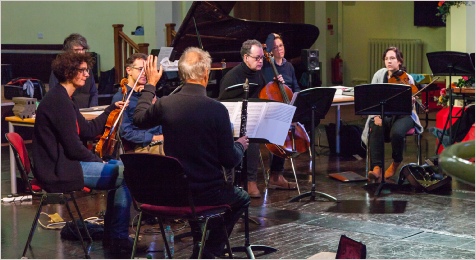
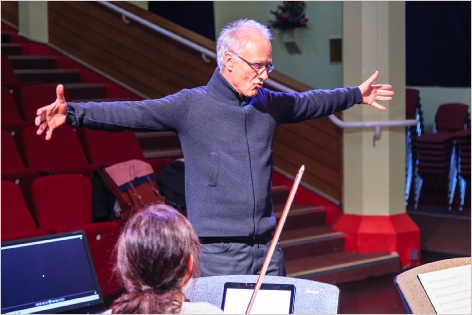
““Musical connections are often made via circuitous routes. I found myself thinking about this recently when attending a performance of Renaissance composer William Byrd’s music composed for virginal (a transverse plucked keyboard instrument similar to a harpsichord) played instead on a concert piano. I was drawn to the concert by the utilization of Byrd’s music by Jürg Frey and Magnus Granberg in two new pieces, rather than by any particular passion for music of the late 16th century. With that listening background, the transposition of the pieces to an instrument suffused with rich sustain and expansive decay brought a focus to the variegated polyphony that readily connected back to the recordings captured on Early to Late, a recent release on the Another Timbre label.
The genesis of this project took its own circuitous route. In the autumn of 2015, Simon Reynell met with Frey and Granberg to discuss commissions for pieces with a relation to Renaissance music to be performed by the two along with Grizzana Ensemble at the 2017 Huddersfield Contemporary Music Festival. Reynell was completely open as to how this would manifest itself, other than a desire that this hint of a connection be a guiding influence. The two centered in on two pieces for source material, “How Vain Are All Our Frail Delights” by Byrd and “Déploration sur la mort de Binchois” by Johannes Ockeghem. Each absorbed and refracted the foundational material in ways that underline their respective approaches to compositional forms and group interplay. Granberg’s piece coopts the title of Byrd’s piece, while abstracting it into a changeable temporal framework for clarinet, piano, strings, celesta, dulcimer, glass harp, flute and electronics. Frey’s “Late Silence,” instead makes direct use of the melodic lines of the source material as ephemeral melodic and harmonic threads for an acoustic ensemble.
In an interview on the Another Timbre site, Granberg reflects that “my piece basically consists of a few different pools of materials (containing melodic and rhythmic fragments, extended melodies, single notes, chords, suggestions regarding timbre etc.) notated in conventional staff notation, along with some suggestions as to how to treat them, as well as a temporal structure which regulates when to play from which group of materials. Within these groups or pools of materials the musicians are free to choose what to play and when to play it, and the final outcome is very much a result of the superimpositions, juxtapositions and interactions of the musical materials, as well as of individual and collective processes of listening, deciding (intuitively or consciously), acting and interacting, or not interacting, with one another.” Granberg’s choice of instrumentation and performers, a component long central to his practice, is the key to the potency of the piece. Running throughout are grains of a melodic thread (a ‘cantus firmus’) played by Frey on clarinet, derived from melodic fragments of the source material as well as Jerome Kern’s “In Love in Vain,” which reappears and morphs through the ensemble during the course of the piece.
The score specifies that “the Cantus Firmus is (…) to be played very softly, almost silently. And later: (…) the Cantus Firmus at times only being present within the mind of the performer.” These instructions and the textural range of instrumentation provides a plaint, ever-shifting focus of attack and sustain, with pizzicato pops and sharply articulated knocks countered by arco scrims and quavering overtones. The tonal elements mix effectively with subtle, abraded electronics which add an additional layer of timbral depth. Over the course of the 40-minute piece, the ensemble navigates these wafts of thematic memory with an assured conviction. In the interview noted above, Dominic Lash, a member of the ensemble, explains that “the process of playing required great attentiveness, but was actually a calm and comfortable experience as long as you trusted the group and the music – in a sense the fragility seemed to lie more in the sounding result than the execution.” Listening, one is struck by the way that the strata and gradations of the parts continually intersect, break apart and overlap informed and guided by patience and careful listening.
In his program notes for the Huddersfield premiere Frey describes “Late Silence” as follows. “The material is raw but delicate. The language is non-rhetorical and precise. The form has a clear architecture; sounds and sections become present and disappear but don’t dissolve. The work of the composer is elemental – as is its absence when the composer lets the music go on without interference. Tonality is vaguely touched on, a soft, slightly wavering light in the music. Silence, memory, presence – this triad shimmers in the background and keeps the piece in a balance of clear decisions and wide horizons.” In writing the piece, Frey utilized phrases and themes from Byrd and Ockeghem with minor transformations, adding in his own melodic lines. He lays out these kernels with his usual resolute lucidity, plying instrumental lines against each other with measured composure.
The ensemble traverses the score with assiduous resolve, as various instrumental groupings reveal themselves. Tonal relationships and melodic line play a far more central role in Frey’s piece than in Granberg’s with calm pools of silence serving as central compositional elements. Just as central to the score is Frey’s usual attention to the slow, unrushed passage of time. While tonality and harmonic relationships are paramount, Frey calls on Granberg and John Lely to use stones (a possible homage to Christian Wolff) to add in hints of abraded textures at points along the way. But it is still the way that Frey places the long, drawn string arcos, crystalline piano part (played with command by Phillip Thomas,) pairing of clarinet and harmonicas, or the resonance of double bass within the unfolding sound field that define this piece.
Hearing these two pieces together makes for an entrancing listen. The Granberg piece edges out Frey’s for me, but with patient attention, each listener will find their own way to navigate these absorbing readings.”
Michael Rosenstein, Dusted
[On Jurg Frey’s ‘Late Silence’] “Single, clear lines from piano, dulcimer and strings perform a calm dance, evoking early music without by any means aping it. There's a somberness befitting Ockeghem's subject, tempered by extreme tenderness. The wonderful sound of sliding stones enters beneath the spare, solitary, grainy lines. As with much of Frey's music, the sounds themselves are transparent and "simple" but their placement and their extraordinarily subtle placement provides endless fascination. When other elements are added, harmonica and clarinet in one section, for instance, there's no feeling of overcrowdedness; they slip into the stream, enriching the sound field but never obscuring their cohorts. There are sudden shifts, as when the ensemble gives way to solo piano about 21 minutes in; one has forgotten how full the music had become. The mix of instruments shifts as the piece progresses (harmonica and flute are introduced), always retaining a strong connection to an ancient sensibility, slowed, parsed, and re-examined. 'Late Silence' fits right in to the recent run of gorgeous music by Frey, utterly enthralling.”
Brian Olewnick, Just Outside